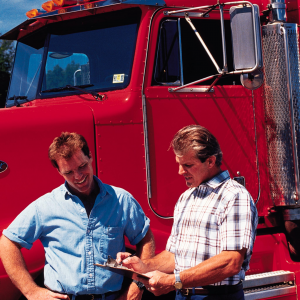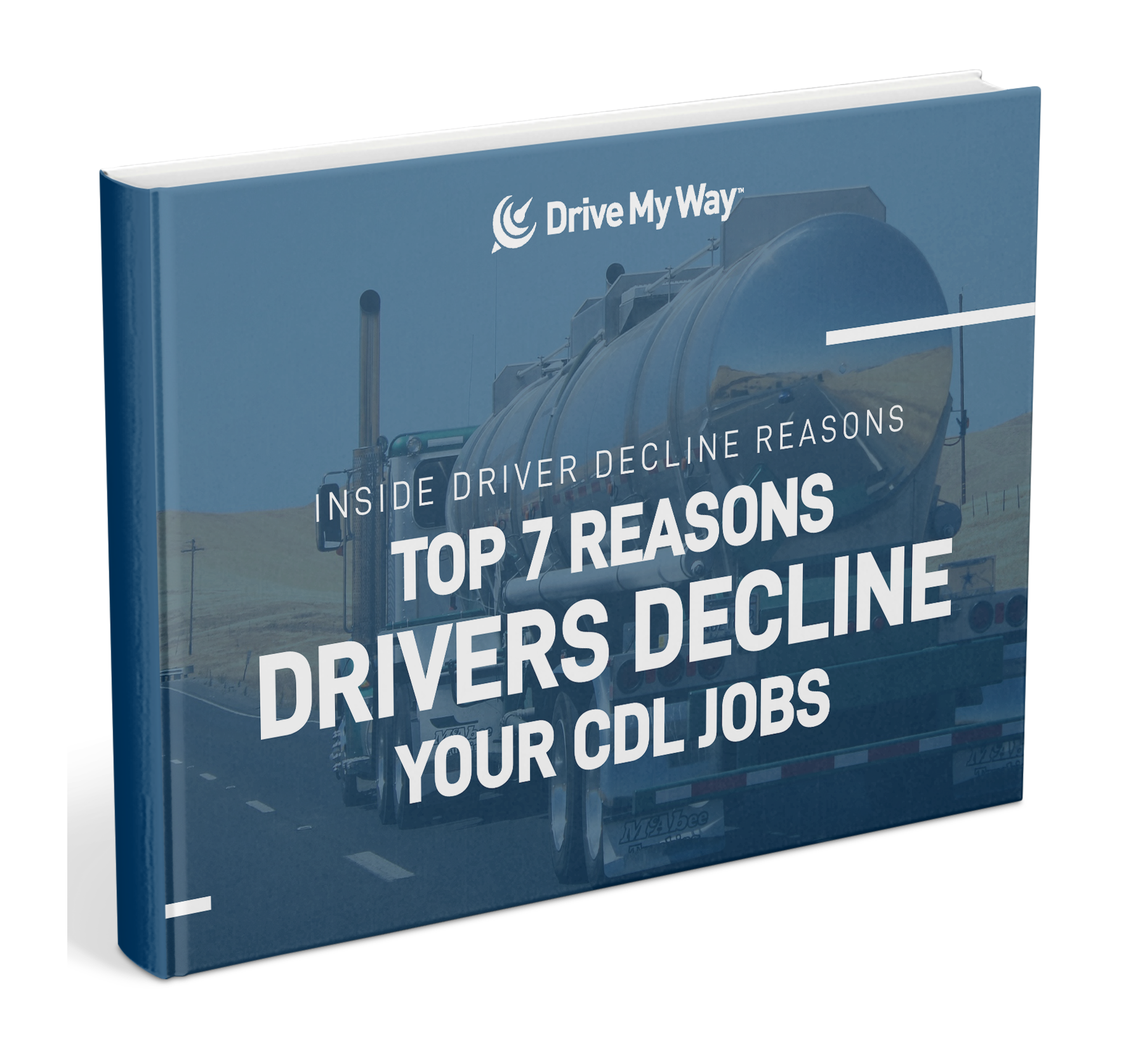
Sexual harassment in the trucking industry is a documented problem. The good news is, many people want to promote safer work environments and stop harassment. Frequently, conversations center on women who experience sexual harassment. This is not a problem exclusively experienced by women, but in a heavily male-dominated field, it is often women who report incidents. As a result of the trucking shortage, more and more female drivers are entering the workforce, and safety on the job needs to be a priority.
Regardless of your personal feelings on the subject, it makes good business sense to take clear steps to stop sexual harassment in trucking. Small companies and large fleets alike can rely on a combination of policy and company culture. What’s a good way to check if you’re doing well? Look around you. Are women drivers and employees who you recruit staying with your company? If there is a disproportionately high level of churn among female employees, uncover the reasons for that turnover.
What is Considered Sexual Harassment?
- Quid Pro Quo: This is one of the easiest forms of harassment to identify, though it may not be easy to report or document. Quid Pro Quo is an explicit request or demand from someone in a position of direct or perceived power of “I do this for you, then you do this for me.”
- Hostile Work Environment: This harassment is often much harder to spot. At its core, a hostile work environment is any unwanted speech or conduct that makes someone else uncomfortable and inhibits someone from doing their job. It could include anything from crude jokes or suggestive comments to inappropriate photos or shirts to nonconsensual touching or other forms of unwanted attention. Hostile work environment complaints are evaluated based on how the comment or action was perceived, not how it was intended. So, make sure employees are clear on your company policies and expectations.
How Can You Promote A Safe Workplace?
1. Policies
Many companies share sexual harassment policies during driver orientation. Unfortunately, while that may be sufficient if legal action is taken, it may not be very effective in preventing incidents. During onboarding, drivers receive a lot of new information, and the complexity of legal policies makes them difficult to understand at the best of times.
Policies should be clear to everyone on your staff. Provide a straight forward reporting structure for documenting an incident before a situation arises.
Instead, remind employees frequently of your policies by incorporating it into your company culture. At their core, policies should be comprehensive but clear to your staff. Communicate a zero-tolerance policy of sexual harassment in your workplace. In addition, provide an uncomplicated, consistent reporting structure for documentation of incidents before there is an incident to report. Encourage employees to use this structure if they do need to report a situation.
2. Training
In addition to training all drivers, recruiters, and other employees on your policies, consider offering safety training. Offer this training to women or anyone else who wants to join the conversation about safety on the road and in the workplace. The underlying question is, “What can you do to set drivers up for safety?”
As an employer, help prepare female and other drivers for these situations. Communicate that it is not their fault. It’s important not to place blame or hold the injured person responsible for the situation. Then, share best practices for preventing and confronting uncomfortable situations. Encourage drivers to be aware of their surroundings. Share resources such as the National Sexual Assault Hotline (1-800-656-4673) if drivers want to reach out for confidential help.
3. Reporting
 Unfortunately, many drivers will experience sexual harassment on the job. Decide how you will handle sexual harassment situations before they arise. Have an open-door reporting policy on reporting. Make it as easy as possible for drivers to bring an incident to your attention. Prior to an incident, clearly share how drivers can expect reports to be handled. If there are specific forms of documentation you require, make sure your employees know what that is. Take care not to set barriers that unintentionally repress reporting.
Unfortunately, many drivers will experience sexual harassment on the job. Decide how you will handle sexual harassment situations before they arise. Have an open-door reporting policy on reporting. Make it as easy as possible for drivers to bring an incident to your attention. Prior to an incident, clearly share how drivers can expect reports to be handled. If there are specific forms of documentation you require, make sure your employees know what that is. Take care not to set barriers that unintentionally repress reporting.
Having a designated check-in person is another great way to encourage a culture of safety. Employees should know that they can approach that person with sexual harassment reports. If drivers aren’t coming to you, it may mean that they are too nervous or uncomfortable to broach the subject. Designate someone on staff to periodically reach out to drivers proactively about their experience on the job.
4. Accountability
Accountability includes two sides when it comes to stopping sexual harassment in the trucking industry. The first is accountability within your company. When someone makes a sexual harassment report, it’s important that staff are trained to take the complaint seriously. In addition to prioritizing strong company values, there could be legal consequences for ignoring or glossing over a sexual harassment report.
Hold your company and your employees responsible for their actions. A safe workplace benefits all employees.
The second aspect of accountability is to hold any employees involved responsible for their actions. Clarify how your company will follow up on the report and what the consequences will be. Clearly state (in writing when possible) what will happen if there is a repeat incident. Ultimately, a safer workplace is a positive asset for all employees.




 National job uncertainty has been a hallmark of 2020. With that in mind, it’s more important than ever to
National job uncertainty has been a hallmark of 2020. With that in mind, it’s more important than ever to  In addition to transparency, consistency is critical during uncertain times. It’s so important that in 2019, Harvard Business Review found that
In addition to transparency, consistency is critical during uncertain times. It’s so important that in 2019, Harvard Business Review found that  Public recognition is most meaningful as a way to connect drivers when it is paired with private or internal recognition as well. Drivers will quickly see through any companies that praise in public and don’t value drivers in private. In addition to external marketing campaigns, take time to reach out to drivers individually.
Public recognition is most meaningful as a way to connect drivers when it is paired with private or internal recognition as well. Drivers will quickly see through any companies that praise in public and don’t value drivers in private. In addition to external marketing campaigns, take time to reach out to drivers individually. 

 To successfully use behavioral interviewing, there are a few steps. First, review a competency chart. Then, identify the competencies that are most important to successfully doing the jobs you have open. For all truck drivers, planning, problem-solving, and time management are likely to be high on your list.
To successfully use behavioral interviewing, there are a few steps. First, review a competency chart. Then, identify the competencies that are most important to successfully doing the jobs you have open. For all truck drivers, planning, problem-solving, and time management are likely to be high on your list.  Everyone wants to sound their best during an interview, and it’s natural for humans to be selective in their storytelling. It’s all too easy for a candidate to embellish or stretch the truth when talking about themselves. Unfortunately, as an interviewer, this makes your job very difficult. Even a well-meaning enhancement of what a driver
Everyone wants to sound their best during an interview, and it’s natural for humans to be selective in their storytelling. It’s all too easy for a candidate to embellish or stretch the truth when talking about themselves. Unfortunately, as an interviewer, this makes your job very difficult. Even a well-meaning enhancement of what a driver 





 1. Equipment
1. Equipment 3. Health Incentive Programs
3. Health Incentive Programs 5. Professional Development
5. Professional Development





